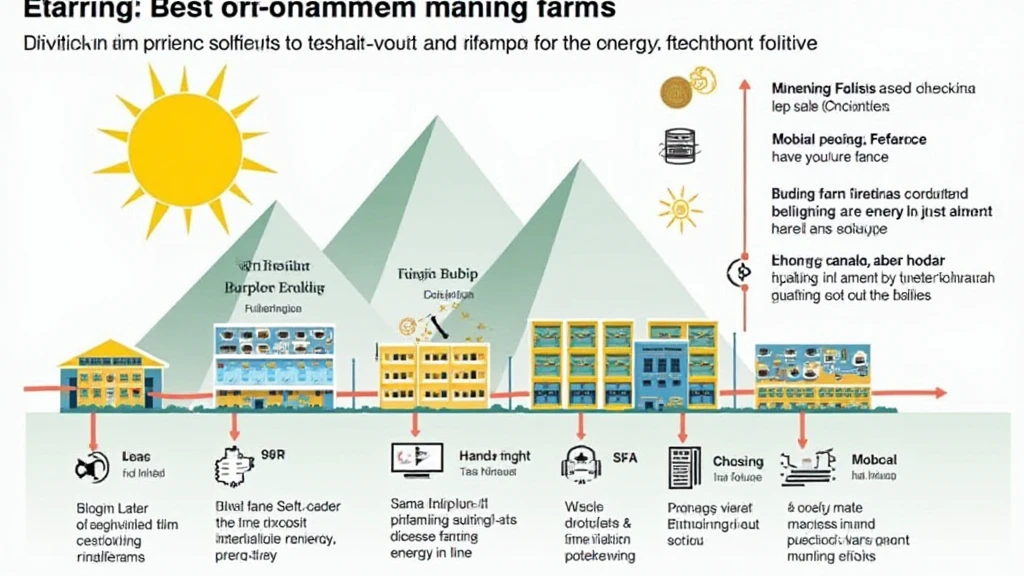Introduction
In the world of cryptocurrency, Bitcoin mining is a key process that supports the network. However, with the enormous profits come substantial challenges, particularly regarding energy consumption. In 2024 alone, Bitcoin mining accounted for an estimated 0.5% of the world’s energy usage, raising concerns about sustainability and operational costs.
This article explores the intersection of Bitcoin mining farm energy costs and efficiency enhancements, offering insights into strategies that can optimize operations and mitigate financial risks. We’ll also touch on Vietnam’s growing cryptocurrency market and understand how energy costs might impact this developing scene.
Understanding Bitcoin Mining Energy Costs
Bitcoin mining involves using computers to solve complex mathematical problems to validate transactions on the blockchain. The energy required for these processes can be staggering. For instance, as of 2025, average energy consumption per transaction hovered around 1,700 kWh, which indicates the individual investment in energy for transaction verification.

Let’s break it down through an analogy: think of a Bitcoin mining farm as a factory where the raw materials are electricity and computing power. The more advanced the machinery, the higher the energy costs.
Energy Sources for Mining Farms
- Renewable Energy: Often viewed as the ideal solution, as it can substantially lower energy costs in the long run.
- Fossil Fuels: While cheaper in some regions, they come with environmental costs and regulatory scrutiny.
- Nuclear Energy: A viable alternative that offers a low carbon footprint, yet presents public acceptance challenges.
The Role of Efficiency in Reducing Costs
When looking at Bitcoin mining farm energy costs, improving efficiency is crucial. Efficiency can be defined as doing the same amount of work with less energy. Investing in efficient hardware and innovative cooling solutions can drastically decrease energy expenditures.
Top Efficiency Solutions
- ASIC Miners: Application-Specific Integrated Circuits (ASICs) are designed specifically for mining, making them more efficient than general-purpose hardware.
- Immersion Cooling: This involves submerging mining equipment in a cooling liquid, which can significantly lower cooling costs and increase efficiency.
- Utilizing Heat Waste: Many mines now harness the heat generated by mining equipment for local heating or other energy needs.
The Impact of Energy Costs on Mining Profitability
Energy costs are one of the most critical factors determining the profitability of Bitcoin mining operations. High energy prices can quickly erode profits, particularly in volatile markets. For instance, in regions where electricity costs exceed $0.10 per kWh, profitability tends to plummet, forcing miners to rethink their strategies.
Market Trends in Vietnam and Their Implications
In Vietnam, the cryptocurrency market has been experiencing significant growth, with a reported user base increase of over 150% in the past year. This rapid expansion demands a closer look at energy costs associated with local mining farms, especially given Vietnam’s unique energy landscape dominated by coal.
Long-Term Strategies for Cost Mitigation
To ensure sustainable profit margins, miners must adopt long-term strategies that encompass both energy consumption and market volatility. Here’s how:
- Diverse Energy Mix: Utilizing a blend of energy sources can shield miners from fluctuations in energy prices.
- Investment in Technology: Continually upgrading to the latest mining technologies can keep operations ahead of the energy game.
- Collaboration with Local Authorities: Engaging with governments to find incentives for green energy usage can ease operational burdens.
Conclusion
The landscape of Bitcoin mining farm energy costs is complex and requires a strategic approach to navigate successfully. As the industry evolves, so does the focus on efficiency and profitability, pushing miners towards innovative solutions and sustainability efforts. With Vietnam at the forefront of cryptocurrency growth, it is essential to address these issues proactively.
By adopting efficient practices and leveraging the right energy sources, Bitcoin miners can optimize their operations and thrive even in a competitive market. For anyone involved in this realm, understanding the nuances of energy costs is not just beneficial—it’s essential.
Stay up to date with the latest trends and developments from allcryptomarketnews, where we delve into the intricacies of cryptocurrency and blockchain technology.





